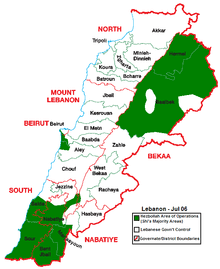In the past few weeks thousands of rockets fired by Hezbollah at northern areas of Israel have resulted in considerable damage to civilian properties and military sites. This heavy rocket and UAV barrage from Hezbollah has forced around 80,000 residents to abandon their homes and move to safer locations. The current situation in Northern Israel is alarming as massive rocket rain from Hezbollah is making it uninhabitable. Hezbollah has said its military operations in Israel are in response to Israel’s war on Gaza and that the group is not seeking an all-out conflict with Israel. But in reality, both sides have intensified attacks on each other in recent weeks. There are rising fears of an all-out war amid fresh calls for a military escalation from Israeli officials. Also, Hezbollah’s new ability to bypass the Iron Dome system has rung alarm bells in Tel Aviv and forced Israeli policy makers to consider more decisive actions.
Hezbollah has been using new armaments and tactics this time employing advanced weapons and targeting deeper within the country. Hezbollah is the most potent threat to Israel at its doorsteps because its capabilities are way ahead of Hamas or Islamic Jihad, the two main groups currently in war with Israel. Strategically positioned along Israel’s northern border, and throughout South Lebanon’s Bekaa Valley, Hezbollah maintains an advanced military arsenal exceeding that of many national armies. Currently all of Southern Lebanon is a Hezbollah fortress of underground bunkers, rocket launch sites and interconnecting tunnels. While Hezbollah doesn’t have an operational air wing of its own but in every other way it can be described as a medium size regular army rather than semi-amateur militia. Let’s have a look at various factors which have made Hezbollah a tough foe for Tel-Aviv.
Acquisition of Modern Rockets/Missiles – Israeli intelligence estimates that Hezbollah now possesses an arsenal of some 150,000 missiles and rockets. In addition to holding a vast arsenal of medium and heavy rockets like-Burkan. The group is in possession of tactical ballistic missiles including Scud missiles, Fateh-110 Iranian missiles, and M-600 missiles, a Syrian modified version of the Fateh-110. Many of them cover the whole of Israel. While Hezbollah largely fired unguided rockets into Israel during the 2006 war, its weapons capabilities have allegedly received a major upgrade, since then. Now the group has the ability to strike guided munitions across Israel, they can hit targets inside Israel including central and southern areas with increased accuracy, including command posts, airfields, and major economic targets. Israeli military planners estimate that Hezbollah will be able to launch thousands of Rockets/Missiles per day in a future conflict, compared to the 2006 rate of one hundred per day. This rate of rocket fire can overwhelm all of the Israeli anti-missile defence systems like- Arrow, David’s Sling and Iron Dome.
Effective Air Defence Systems– Israel Air Force always had the upper hand in all the conflicts it participated in, apart from the initial phase of 1973 Yom Kippur war. It played a very important role in the 2006 Lebanon war by destroying Hezbollah’s entire long-range missile capabilities within a few hours. But now Hezbollah is in possession of some of the very effective air defence systems which are going to prove a big challenge for the Israeli Air Force in dominating the Lebanese air space. Hezbollah currently possesses an SA-17 Buk anti-aircraft missile battery of Russian origin which can directly threaten Israeli aircraft operating in northern Israel and the region.
Valuable experience in Syrian war– In fighting alongside the Syrian government, Hezbollah has gained a lot of tactical battlefield experience and weaponry that has made it a far more threatening force for its enemies elsewhere in the region. Those close to the group say that for the first time Hezbollah has the ability to bring a war with Israel deep into Israeli territory. Hezbollah improved its logistical operations and learned to use more sophisticated equipment, artillery, and reconnaissance and surveillance drones more effectively in the Syrian conflict.
Ability to open Second Front– Hezbollah has the capability to open a second front from the Syrian controlled Golan Heights against Israel in case of any major conflict. Hezbollah has good reason to prefer placing its projectiles in Syrian control Golan. This would place those projectiles out of range of IDF ground troops and could be hidden in the Syrian army’s hardened shelters to better insulate them from air strikes. By dispersing the weapons across the second front in Syria, Hezbollah would complicate Israel’s task of destroying them. Israeli jets would now have to cover a much larger area to locate and destroy these rockets, while also worrying about ducking Syrian and Russian air defences.
In case of all out-conflict Israel will require a comprehensive hybrid strategy including both defensive and offensive measures. Defensively, Israel should try to increase the capacity of its anti-missile defence systems and strengthen its civil defence measures to reduce the effects of Hezbollah’s rocket/missile onslaught. IDF offensive operations should focus on eliminating the threat. This would likely mean destroying launch sites throughout Lebanon and seizing launch areas. Therefore, an offensive strategy should be devised aimed specifically at acquiring territory so as to deny the enemy a platform from which it could launch its weapons. Moreover, Gideon Doctrine, which suggests the quick use of full force against the enemy throwing it off the balance and dealing it a crushing blow before it can recover can also be used as an offensive measure.





